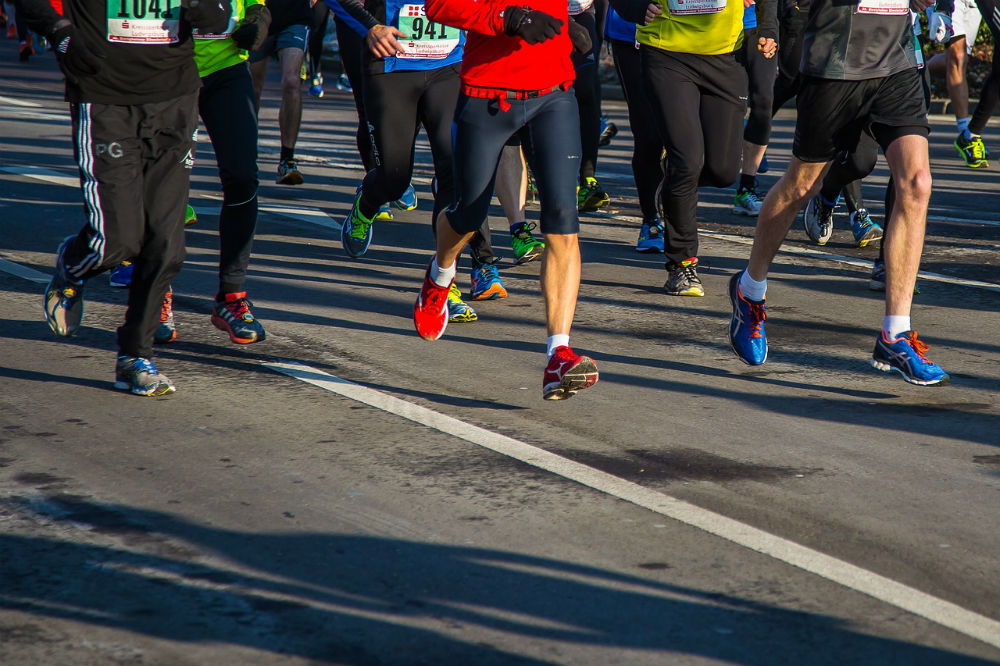
The infamous London Marathon takes place this Sunday (April 28), and with tens of thousands of people lacing up their trainers in order to pound the pavements for 26.2 miles, top Training Specialist, David Wiener, from leading fitness app Freeletics (www.freeletics.com), shares his tips for turning yourself into a marathon machine:
1. Make a plan, stick to it, and be accountable
Making a plan, sticking to it and ensuring you hold yourself accountable is key for both training and on race day itself. To be successful, this is where you really need to understand what motivates you and what makes you tick. Some people will have no problem setting out a plan and sticking to it, but while training and on the big day, you are going to hit moments where you need that extra push or helping hand. Recognise this from the get-go and invest your time into making a plan that suits your individual needs. For some, a great idea would be a training partner (or several). Speak to your friends, and colleagues and see if you can set up weekly slots where you can get to a HIIT class or go for a run together.
Every Sunday plan out your training programme, make it realistic week by week and don’t feel like you can’t adapt it to fit your lifestyle. We all have off days! Remember, it doesn’t matter how fit or strong you are, injury or sickness might strike, and you need to be flexible enough to listen to your body, adapt and continue moving forward with your training regime.
2. Don't downplay nutrition
What you eat can massively impact on your training and performance, especially in the days before the marathon, or a long training run. Eating too much, too little or the wrong foods could leave you feeling tired or force you to have to stop to use the toilets, so make sure you plan your meals properly and steer clear of new or adventurous foods. Most importantly, in this last week leading up to the marathon, approximately 65-70% of your calories should come from complex carbohydrates, such as wholegrain bread and pasta, so that your body stores this for energy that you will need on race day. If you’re in need of some inspiration, the cutting-edge, Freeletics Nutrition app offers a wide range of recipes and meal ideas which are tailored towards your goals and food preferences.
3. Be prepared to exit your comfort zone
Committing to a training plan will push you to your limits and challenge your body and mind in different ways. But rest assured, all that hard work will not go to waste. Your body will be accustomed to some of the physical demands thrown upon you and the mental resilience you build up will carry you through the finish line on race day.

4. Take time to rest and recuperate
Our knees, hips, calves, Achilles heel and feet will all need some extra care and attention. The physical and metal demands of a marathon are incredibly high, and you will be pushing yourself to your limit so it’s vitally important to focus on more than just training, also prioritising recovery, stretching and regular rest days. Disciplines like yoga and Pilates are great to incorporate into your training regime, and can allow your body vital time to stretch and rest in between runs.
5. Keep an eye on the weather and dress accordingly
Be sure to check the weather forecast prior to training and on race day so that you can dress appropriately. However, do not assume that the forecast is correct and be sure to prepare for the warmest temperature that it predicts, as well as the coldest. You should also ensure that any extra clothing that you bring is not something that you want to keep, as you will likely need to discard this once the race begins, as your body temperature starts to increase as the race progresses. Hours of rain can also make for an extremely unpleasant marathon, so make sure you wear clothing that will not become heavy and weigh you down once it gets wet. Sunglasses and waterproof sunscreen are a necessity in the heat, while a hat or visor to protect your face is also a good idea.
It is important that everything you wear has been worn before, ideally in different weather conditions, and is well broken in. This is to ensure that it has gone through a rigorous test run so that you are not faced with some unexpected surprises as a result of your choice of running gear, which can impact your race experience and time.
6. Focus on your breathing
Breathing is a vitally important component of marathon or long-distance running, and incorrect or inconsistent breathing can cause a dreaded stitch. The diaphragm is responsible for drawing air into the chest cavity but to do this properly and optimally you need to be stood up straight. If not, other muscles will pick up the slack and if/when they get overworked you can experience cramp. To avoid this, work on your alignment, running technique and posture which can all help with speed and injury prevention.
Words by David Wiener, Training and Nutrition Specialist at leading fitness app Freeletics (www.freeletics.com)
Tagged in Marathon Tips

